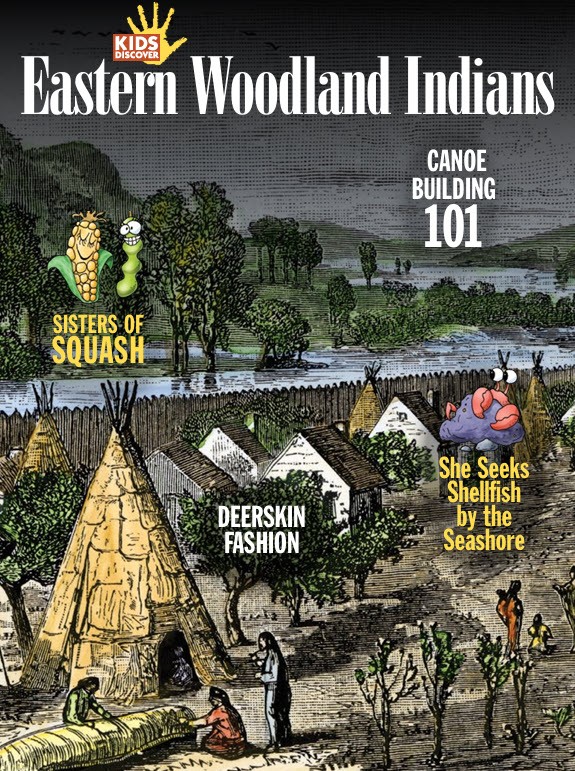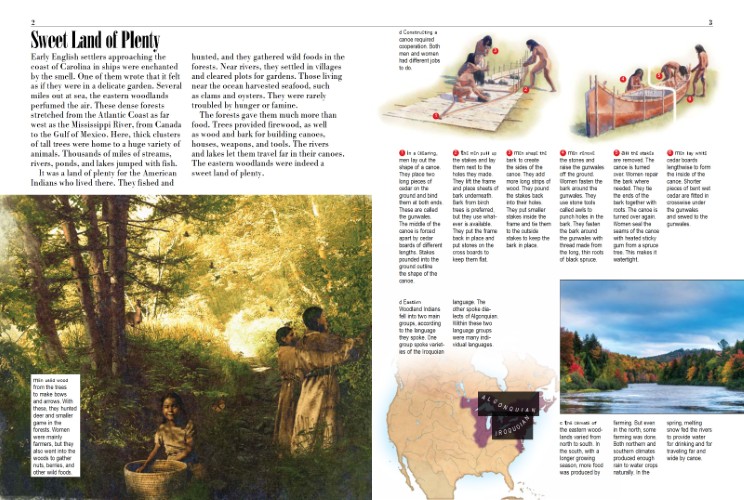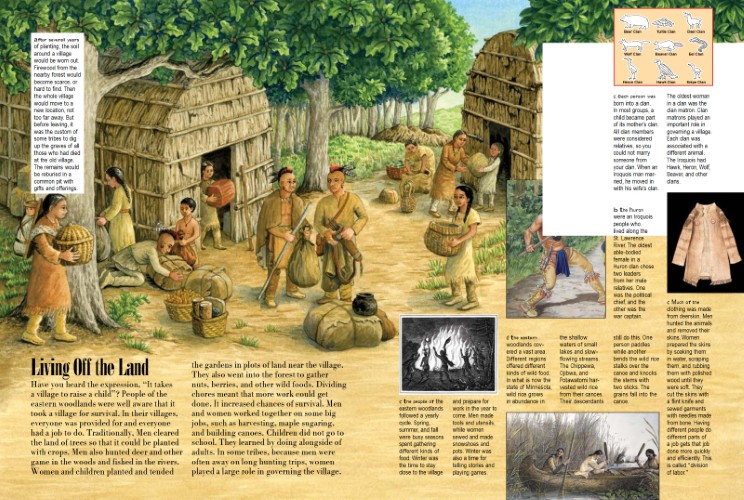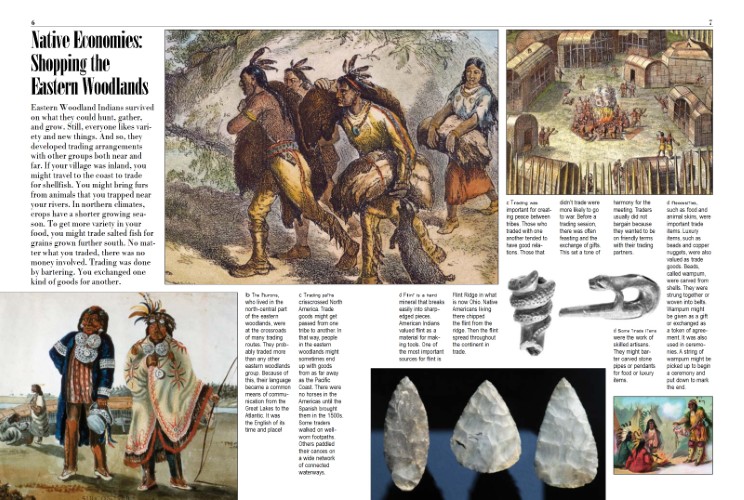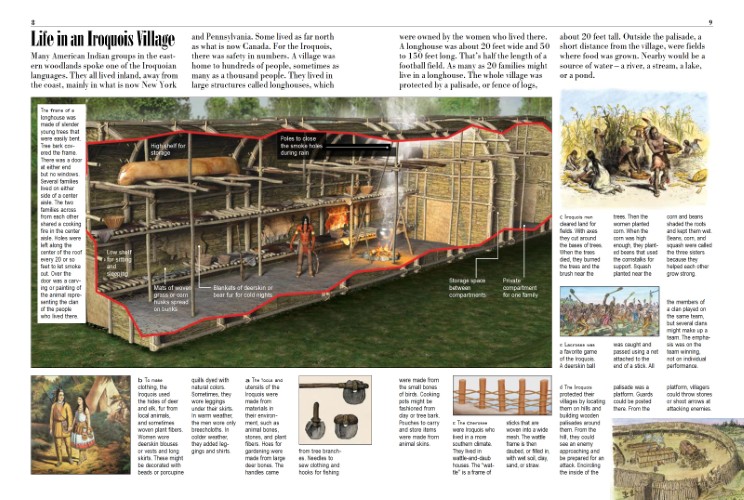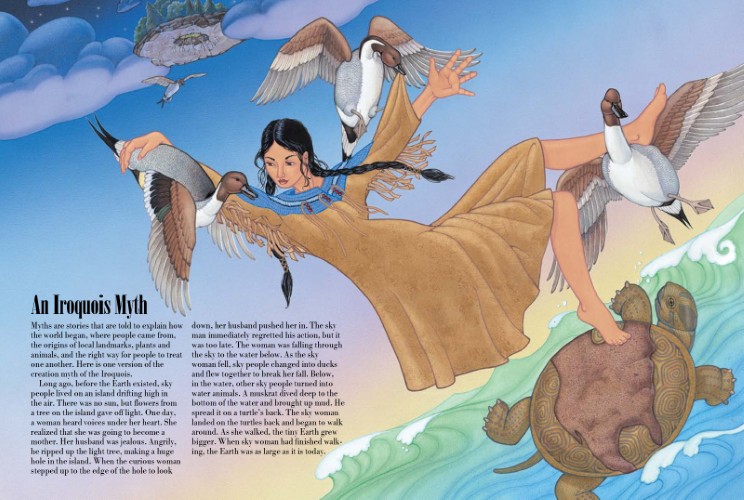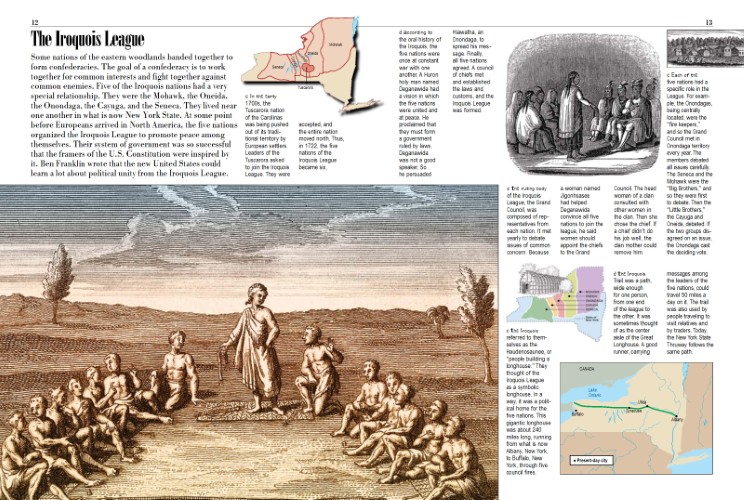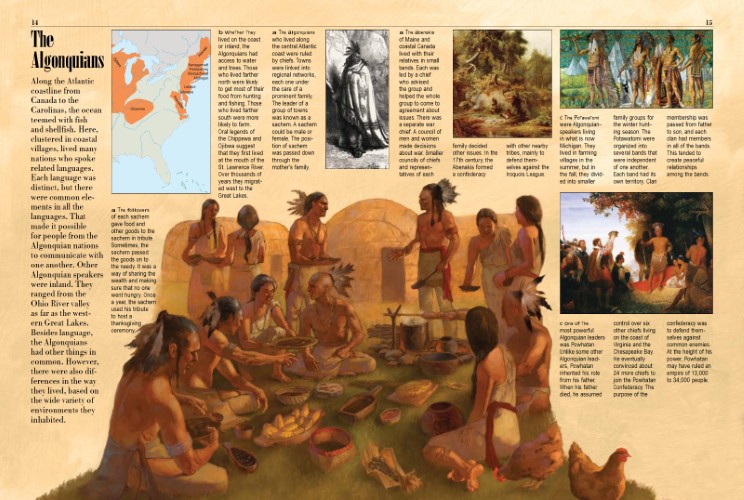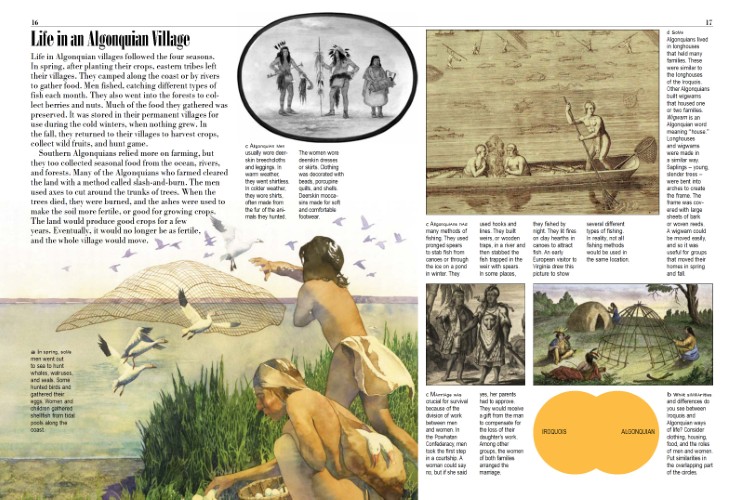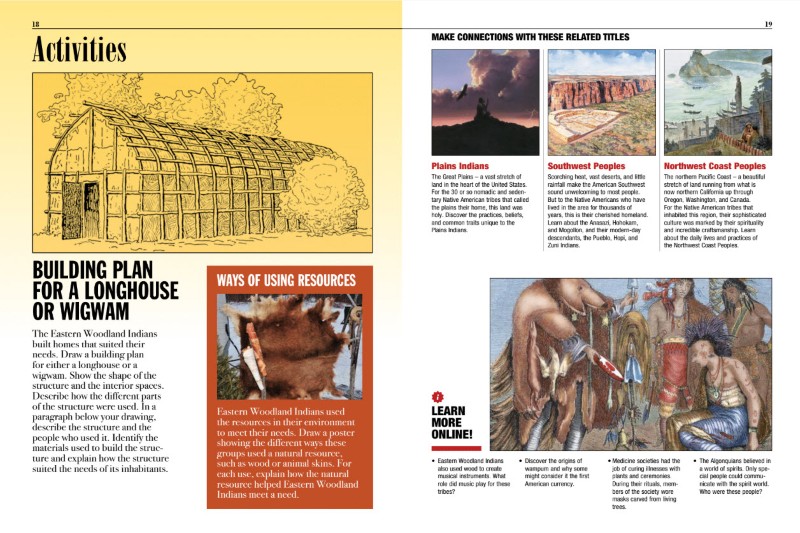Get digital access to this title and hundreds more with a Kids Discover Online subscription.
Get digital access to this title and hundreds more with a Kids Discover Online subscription.
Eastern Woodland Indians
Today, we can get pretty much everything we need in stores – food, clothing, books, and so on. But the Eastern Woodland Indians had no stores. How did they get the things they needed? Kids will find the answer in this behind-the-scenes glimpse at life among a diverse group of people.
First, kids find out about the Eastern Woodland Indians in general – where they lived, how they shared the work of survival, how they kept peace among themselves. Then they dive into in-depth narratives about the Iroquois and the Algonquians. Carefully researched illustrations and primary-source images shed light on many aspects of Indian life. Highlights include a detailed cutaway view of an Iroquois longhouse and an Algonquian fishing scene.
Kids who crave facts about everyday life among the Indians will be fascinated to find out how they made watertight canoes, how they used resources in their environment to make everything from clothing to homes, and how they traded for goods from faraway places. Kids focused on government and civics will be interested in finding out about the Powhatan Confederacy of independent clans and the Iroquois League, an alliance designed to promote peace among several Iroquois nations. Kids interested in indigenous literature will be delighted to read a complete retelling of an Iroquois myth. And budding anthropologists will be able to compare these two groups of Eastern Woodland Indians with confidence.
